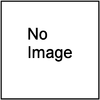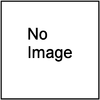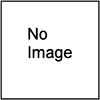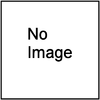 This pamphlet was issued by the British War Office in 1942 and is literally ‘the last word’ on the subject as the Italian Army was soon to disappear as a combatant in the Second World War. It gives details of personnel, arms of the service and operations in war, militia, organisation and strength, details of troops in Libya as well as sections on equipment. There is also a chapter on the identification of Italian units, plus Italian conventional signs and abbreviations. Many organisation charts and other tables.
This pamphlet was issued by the British War Office in 1942 and is literally ‘the last word’ on the subject as the Italian Army was soon to disappear as a combatant in the Second World War. It gives details of personnel, arms of the service and operations in war, militia, organisation and strength, details of troops in Libya as well as sections on equipment. There is also a chapter on the identification of Italian units, plus Italian conventional signs and abbreviations. Many organisation charts and other tables.
 A detailed description of operations of the Canadain troops in Normandy from 1 to 23 August 1944. This volume contains details of the plans for the breakout beyond Caen, Operation Totalize, the Mortain counter-offensive and the advance of the US Third Army, Operation Tractable, the envelopment of Falaise, closing the gap and casualties and enemy losses.
This report is important in that it gives a second opinion on these important operations, and complements the National Archive CAB papers on this period, to be published by MLRS in the near future.
A detailed description of operations of the Canadain troops in Normandy from 1 to 23 August 1944. This volume contains details of the plans for the breakout beyond Caen, Operation Totalize, the Mortain counter-offensive and the advance of the US Third Army, Operation Tractable, the envelopment of Falaise, closing the gap and casualties and enemy losses.
This report is important in that it gives a second opinion on these important operations, and complements the National Archive CAB papers on this period, to be published by MLRS in the near future.
 Operations of Canadian forces in Europe from 23 Aug to 30 Sep 1944. This report looks at the advance to the Seine (including the advance by 1 British Corps), preparations for crossing the Seine, clearing the Foret de la Londe, the German retreat across the Seine to the Somme, and the allied advance to Ghent and Dunkirk.
Operations of Canadian forces in Europe from 23 Aug to 30 Sep 1944. This report looks at the advance to the Seine (including the advance by 1 British Corps), preparations for crossing the Seine, clearing the Foret de la Londe, the German retreat across the Seine to the Somme, and the allied advance to Ghent and Dunkirk.
 The history of 30 Corps from Normandy to the end of the war in Europe.
This book gives a first-hand account of 30 Corps operations from D-Day to the end of the war. It tells of Corps movements across the Seine and through Flanders and Holland and into Germany. There are details also of the attempt by 30 Corps to reach Arnhem, and the Ardennes battles of winter 1944. The Rhine crossing is covered in some detail.
This is a valuable addition to any collection, and originals are scarce.
The history of 30 Corps from Normandy to the end of the war in Europe.
This book gives a first-hand account of 30 Corps operations from D-Day to the end of the war. It tells of Corps movements across the Seine and through Flanders and Holland and into Germany. There are details also of the attempt by 30 Corps to reach Arnhem, and the Ardennes battles of winter 1944. The Rhine crossing is covered in some detail.
This is a valuable addition to any collection, and originals are scarce.
 The British Commandos were formed to carry out raids in Europe and were soon on the attack. This really good account was written during the Second World War and covers the formation of the Commandos and their early raids on Vaagso, St Nazaire and finally Dieppe, where 4 Commando distinguished themselves. Complete with operational maps and many photographs.
The British Commandos were formed to carry out raids in Europe and were soon on the attack. This really good account was written during the Second World War and covers the formation of the Commandos and their early raids on Vaagso, St Nazaire and finally Dieppe, where 4 Commando distinguished themselves. Complete with operational maps and many photographs.
 "Reibert" has been around for the last 80 years or so, but one of the rarest finds is the edition for 1943, of which this is a reprint. Brought partially up to date for 1943 (it includes the MG34 and the MP38) it nevertheless contains most of earlier editions as well. It was available to all in Nazi Germany and served as an introduction to the German Army and military service as well as a vade mecum for newly mustered recruits. Recommended as both an historical text and a rarity even as a reprint.
"Reibert" has been around for the last 80 years or so, but one of the rarest finds is the edition for 1943, of which this is a reprint. Brought partially up to date for 1943 (it includes the MG34 and the MP38) it nevertheless contains most of earlier editions as well. It was available to all in Nazi Germany and served as an introduction to the German Army and military service as well as a vade mecum for newly mustered recruits. Recommended as both an historical text and a rarity even as a reprint.
This title consists of two original publications, both covering individual companies of the Rifle Brigade: the first is "From the beaches to the Baltic" - G Company, the second, H Company, is compiled from the company war diary. What is important about the two publications is that they are simple, day to day accounts of men in battle. Nothing more needs to be said except to emphasise their importance to all students of military history.
 This fascinating report is one of a series written by German officers for the US Air Force after the Second World War. It covers in some detail operations carried out by the Luftwaffe in support of the German Army on all fronts.
It starts with an examination of the history of air support in World War I, and the provisions made for expansion in the event of a subsequent conflict.
It then looks at the development of the (independent) new Luftwaffe, and its role in ground support for the army, together with an account of the weapons needed for this task.
The book then gets to the heart of the matter with accounts of the operations themselves - reconnaissance and the air defence of the ground forces in the campaigns in Poland, the West (1940), the Balkans and in Russia.
The report is unique, and we have great pleasure in presenting it to our readers as the first volume in our "Air War" series, which will cover air operations during the Second World War.
All air operations and similar will be in the Air War section of our catalogue and can be accessed from our front page.
This fascinating report is one of a series written by German officers for the US Air Force after the Second World War. It covers in some detail operations carried out by the Luftwaffe in support of the German Army on all fronts.
It starts with an examination of the history of air support in World War I, and the provisions made for expansion in the event of a subsequent conflict.
It then looks at the development of the (independent) new Luftwaffe, and its role in ground support for the army, together with an account of the weapons needed for this task.
The book then gets to the heart of the matter with accounts of the operations themselves - reconnaissance and the air defence of the ground forces in the campaigns in Poland, the West (1940), the Balkans and in Russia.
The report is unique, and we have great pleasure in presenting it to our readers as the first volume in our "Air War" series, which will cover air operations during the Second World War.
All air operations and similar will be in the Air War section of our catalogue and can be accessed from our front page.
 This book was originally published as "Small unit actions in Russia"but has been extended with footnotes where necessary to clarify regimental association within divisions, and certain terms have been explained. Published in two volumes, with Volume II containing all the maps from the original, but now coloured for clarity. Volume I contains the text which deals with infantry, artillery and tank tactics and reports on fighting in woodland and tundra, and anti-partisan operations.
This book was originally published as "Small unit actions in Russia"but has been extended with footnotes where necessary to clarify regimental association within divisions, and certain terms have been explained. Published in two volumes, with Volume II containing all the maps from the original, but now coloured for clarity. Volume I contains the text which deals with infantry, artillery and tank tactics and reports on fighting in woodland and tundra, and anti-partisan operations.
This is an excellent descriptive pamphlet of german infantry tactics as observed British in 1940. It covers all minor tactical aspects and is illustrated with a number of sketch maps showing how the Germans carried out their small unit attacks. It also gives a snapshot of the organisation the German infantry battalion in 1940. This complements other MLRS reprints on the German Army. Search under "German" for other material.
German infantry weapons: a detailed look at all infantry battalion weapons, including pistols, rifles, machine guns, machine pistols and lmortars as well as infantry guns. It includes details of ammunition and packaging. Line drawings and photographs complete a first class publication on a very important topic. Includes diagrams.
 This is a reprint of a manual which is described as “a much expanded and more detailed version of courses of lectures given earlier this year [1944] to many of the C.I. personnel, both British and American, who are now in the field.” It covers all aspects of the German intelligence effort, with special chapters on the Abwehr and the RSHA. Very few details have ever appeared on this subject, so this pamphlet has significant importance.
This is a reprint of a manual which is described as “a much expanded and more detailed version of courses of lectures given earlier this year [1944] to many of the C.I. personnel, both British and American, who are now in the field.” It covers all aspects of the German intelligence effort, with special chapters on the Abwehr and the RSHA. Very few details have ever appeared on this subject, so this pamphlet has significant importance.
 The training given to German troops in the inter-war period was probably the best of any army in the world up to that time. By the time this book was written proof of the value of that training had been seen in Poland, France and Russia. The book describes in detail the pre-military as well as military training, and puts the whole ethos of German preparations for war into context. It also covers the procurement and training of officers, and looks at leadership and the task force, aggressiveness and initiative and the use of terrain and surprise. A worthwhile addition to the library any student of the German army before and during the Second World War.
The training given to German troops in the inter-war period was probably the best of any army in the world up to that time. By the time this book was written proof of the value of that training had been seen in Poland, France and Russia. The book describes in detail the pre-military as well as military training, and puts the whole ethos of German preparations for war into context. It also covers the procurement and training of officers, and looks at leadership and the task force, aggressiveness and initiative and the use of terrain and surprise. A worthwhile addition to the library any student of the German army before and during the Second World War.
 A series of translations from original German mountain warfare training manuals together with intelligence material gathered from theatres of war, this manual is unique. It covers combat in high mountains, air operations, mountain infantry, artillery, engineers and service troops. It also covers training mountain troops, clothing and the organisation, weapons and equipment of these specialised troops. Fully illustrated with photographs and line drawings, this is a must for anyone interested in special forces troops.
A series of translations from original German mountain warfare training manuals together with intelligence material gathered from theatres of war, this manual is unique. It covers combat in high mountains, air operations, mountain infantry, artillery, engineers and service troops. It also covers training mountain troops, clothing and the organisation, weapons and equipment of these specialised troops. Fully illustrated with photographs and line drawings, this is a must for anyone interested in special forces troops.
 This is an extract from the much larger manual on German explosive ordnance. It covers all German rockets that were in use during the Second World War. It ranges from the V-1 and V-2 'Vengeance' Weapons to anti-aircraft and -shipping missiles and to artillery substitute rockets. Illustrated with many line drawings it is a valuable aid giving a great deal of useful data on these revolutionary new weapons. The whole of the original manual is also available from MLRS Books.
This is an extract from the much larger manual on German explosive ordnance. It covers all German rockets that were in use during the Second World War. It ranges from the V-1 and V-2 'Vengeance' Weapons to anti-aircraft and -shipping missiles and to artillery substitute rockets. Illustrated with many line drawings it is a valuable aid giving a great deal of useful data on these revolutionary new weapons. The whole of the original manual is also available from MLRS Books.
 This is a short but valuable description of German tank tactics as observed by the British during operations in France and Flanders in 1940. Essentially it shows how the Germans used their tanks in the invasion of France and includes a colour map of the Aisne crossing by German forces. The first experiences of the Panzer troops which were later to become far more professional.
This is a short but valuable description of German tank tactics as observed by the British during operations in France and Flanders in 1940. Essentially it shows how the Germans used their tanks in the invasion of France and includes a colour map of the Aisne crossing by German forces. The first experiences of the Panzer troops which were later to become far more professional.
MLRS Books provide a download service for military historians and those interested in military history.
We specialise in primary source material and accounts which are assembled from such sources. We also publish new titles of specific interest in the field of military history and military genealogy.
MLRS Books offers a catalogue of resources via download only and
these are not printable. Should you want physical copies of our products, we
recommend visiting Caliver Books.
Payment is via Paypal, and prices are as quoted. Hopefully you will be pleased with your purchase,
however, do e-mail if it isn't and we'll try to fix it.






